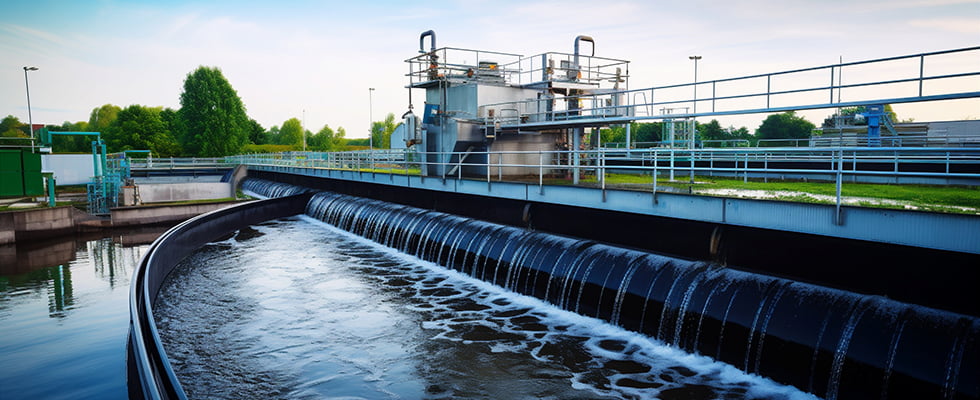
As long as civilizations have existed, humans have needed to manage their waste. An early solution was the Archimedes screw, which was developed to move water by Archimedes of Syracuse, an ancient Greek inventor, in the 3rd century B.C.E. The design is effective and is still in use today in many applications.
Centrifugal pumps were first developed during the Italian Renaissance. These pumps became widely used in Europe in the late 17th century and migrated to North America in the early 19th century. Industrialization and population booms led to a dramatic increase in the amount of human waste. This waste typically was disposed of in waterways, causing contamination and serious public health issues. The invention of the flushing toilet exacerbated the issue, as it added large amounts of water to the waste stream.
Centrifugal pumps made their way into wastewater in the mid-19th century, as the precursor to the modern sewer system was developed. An early example is London’s sewer system, which was started in 1859 and used pumping stations to move waste away from the city. Treatment processes were introduced in the latter part of the century, with the earliest treatment plants being constructed in the 1890s. Submersible pumps would not be utilized in sewer systems until the 1950s. Sewage pumps need to pump water and the solids found in wastewater, so they must be designed in such a way that the solids can pass through the pumps easily. Since then, an increased understanding of fluid flow, construction materials and equipment design has propelled pumps to become sophisticated pieces of turbomachinery.
As systems have changed, so has the waste stream. When looking at the composition of wastewater, traditionally it has only included human waste, fats, oils and greases (FOG) and toilet paper—mostly organic components. Depending on where the wastewater comes from, there may be stormwater as well, which could include sticks, leaves, rocks and other debris.
Of course, wastewater is mostly water, but the amount of water has changed over time. According to the United States Geological Survey, in 1980, the average water usage per capita per day was almost 120 gallons. That has dropped to 82 gallons as of 2015 and continues to decrease. This has been largely attributed to low-flow appliances and fixtures and other water saving measures. Saving water is important, as population growth and climate change affect our water supply and increase the likelihood of water shortages.
As water usage has decreased, new solids have been introduced into the waste stream. The “flushable” wipe was first marketed in the early 2000s and has been plaguing wastewater ever since. Wet wipes are not the only new solids. There are also feminine hygiene products, disposable diapers, cleaning rags, mop heads, latex gloves and more. These items have a common feature: they become stringy when wet. Solids can become tangled into large masses that cannot pass through solids-handling pumps or can wrap around the pump internals, causing clogging. The modern solids, combined with reduced water usage, create a “double whammy” effect. Less water and more solids means the waste stream is harder for pumps to handle, making clogs more frequent.
The traditional solids-handling submersible pump utilizes a “nonclog” impeller, which can be misleading. These impellers tend to clog, especially in applications with heavy solids loading or particularly large solids. Early solids-handling impellers were semi-open with a back shroud that adds strength to the impeller. They trade efficiency for solids handling, although material can still collect in the impeller or between the impeller and volute. Another impeller type commonly seen in solids-handling pumps is the enclosed impeller, which has a front and back shroud. These impellers may have one, two, three or more vanes and offer higher efficiency than a semi-open design. They are somewhat more clog resistant, but the size of passable solids is still limited and material buildup can still occur. A third style is the vortex impeller, which has improved clogging resistance compared to the other two styles. These impellers are often partially or fully recessed, which increases the available space for solids passage. Efficiency suffers, however, and material can still build up.
Over time, many solutions to clogging have been introduced, including suction modifications, improved impeller design, screw type impellers, grinder pumps, cutter pumps, chopper pumps and others. We’ll detail these in the next issue.
References
- scientificamerican.com/article/lift-water-with-an-archimedes-screw/
- flushsmart.org/seriously-flushable-wipes-are-flushable/
- water.usgs.gov/watuse/50years.html
- wri.org/insights/7-reasons-were-facing-global-water-crisis
- pumpsandsystems.com/sites/default/files/0218/history-of-pumps-0218.pdf
- sciencemuseum.org.uk/objects-and-stories/everyday-wonders/flushed-away-sewers-through-history
- archive.org/details/americansewerag00metcgoog

